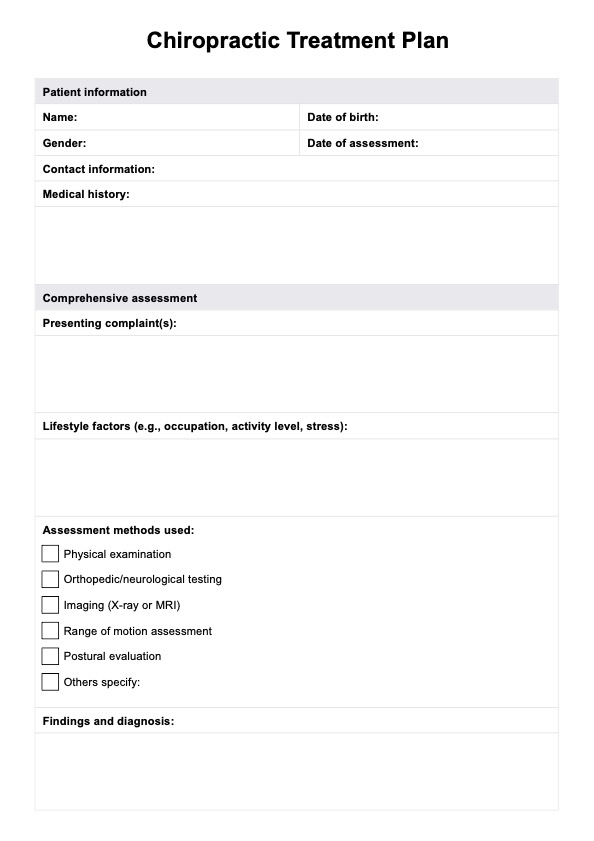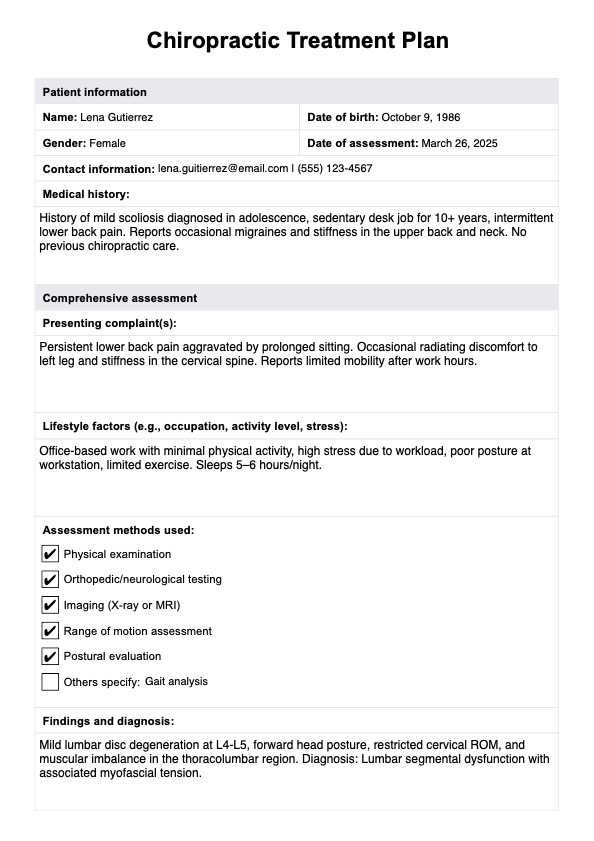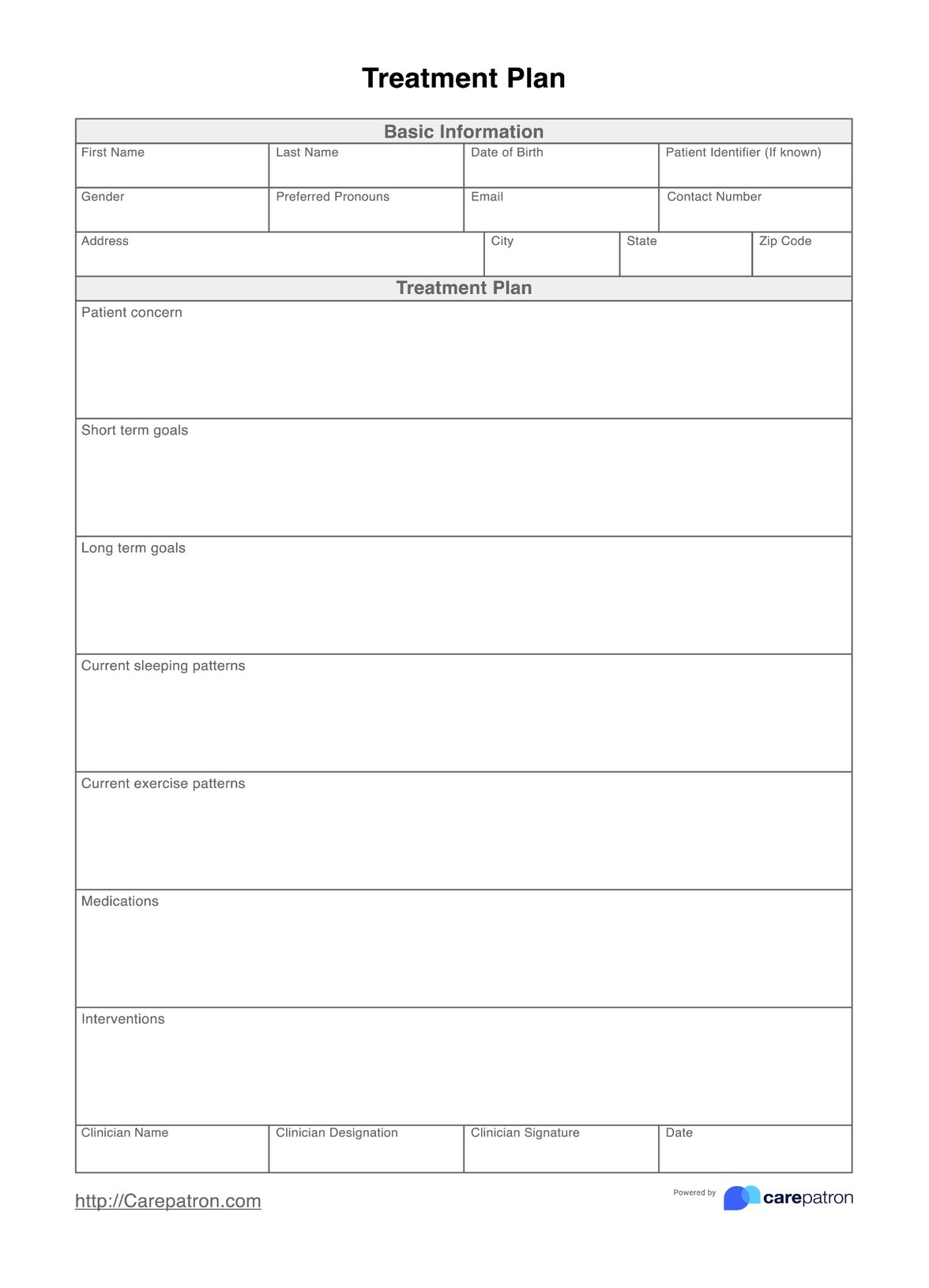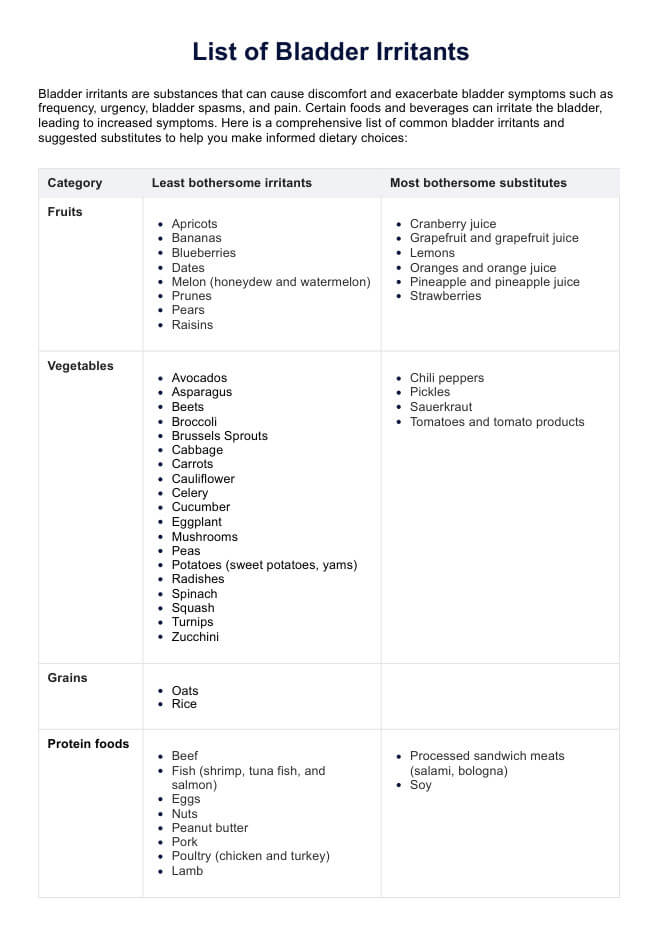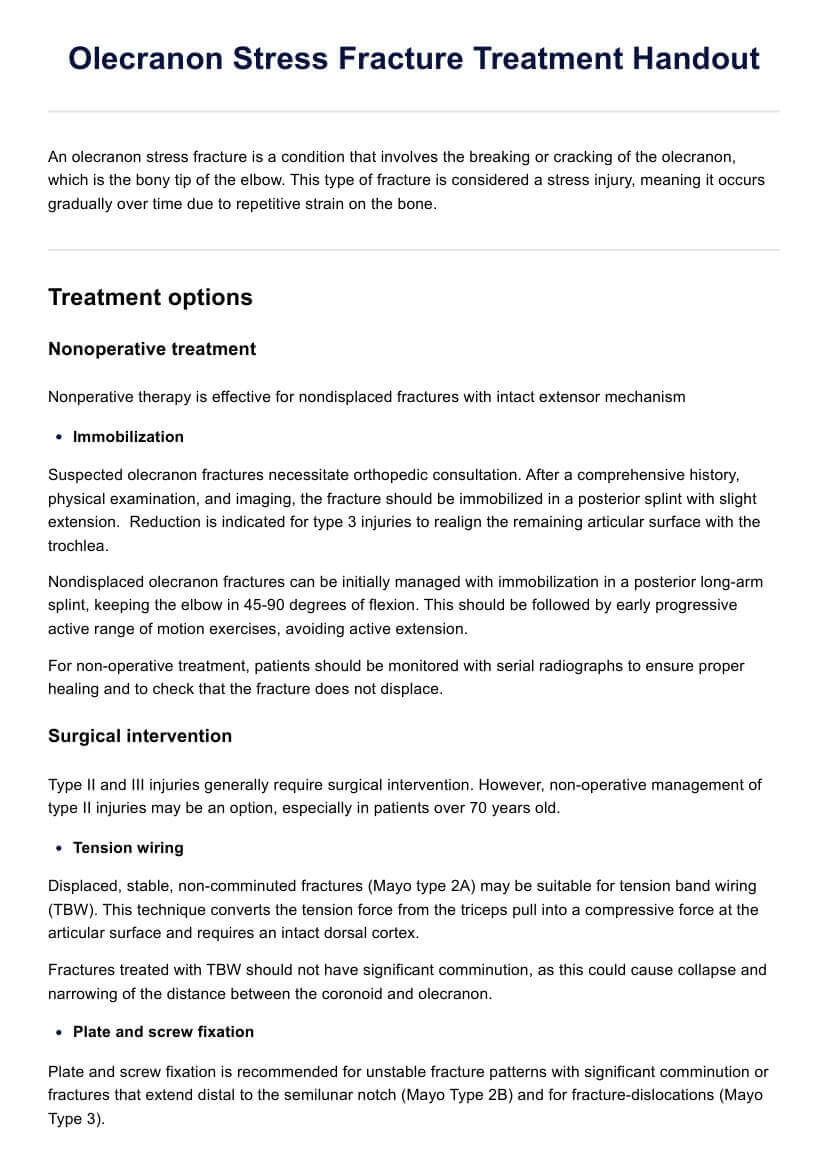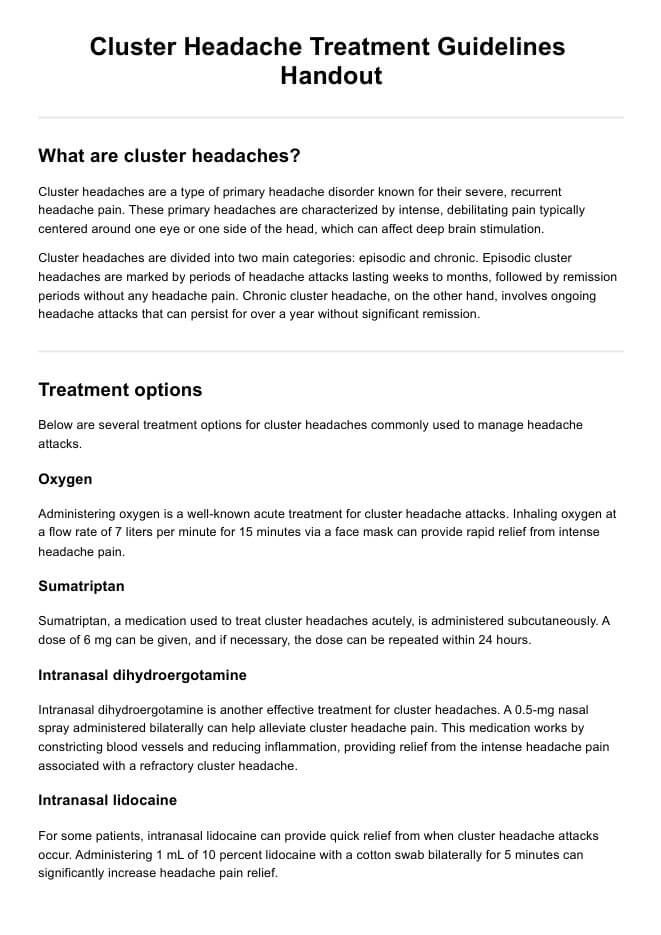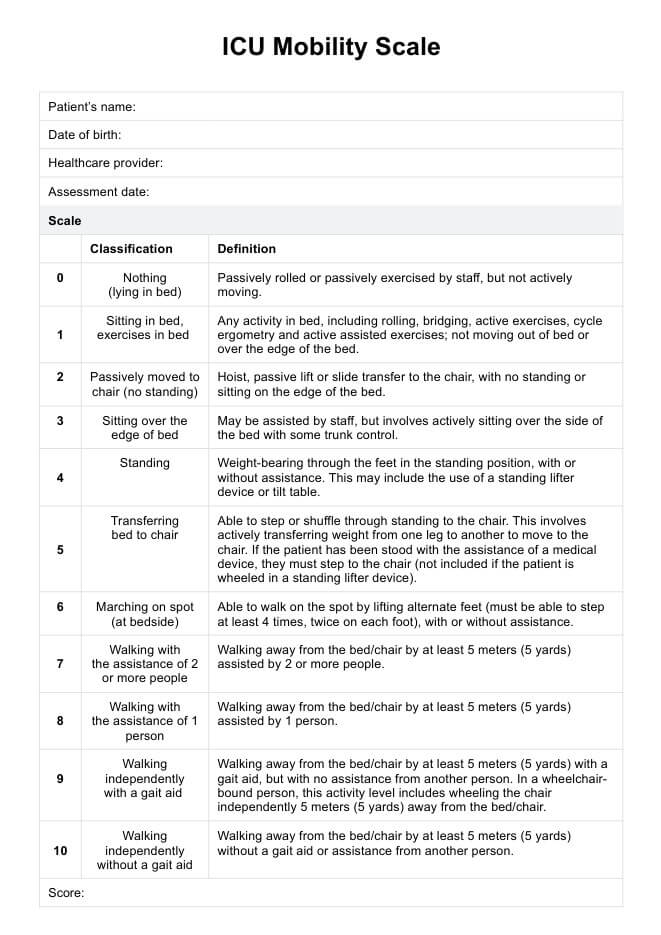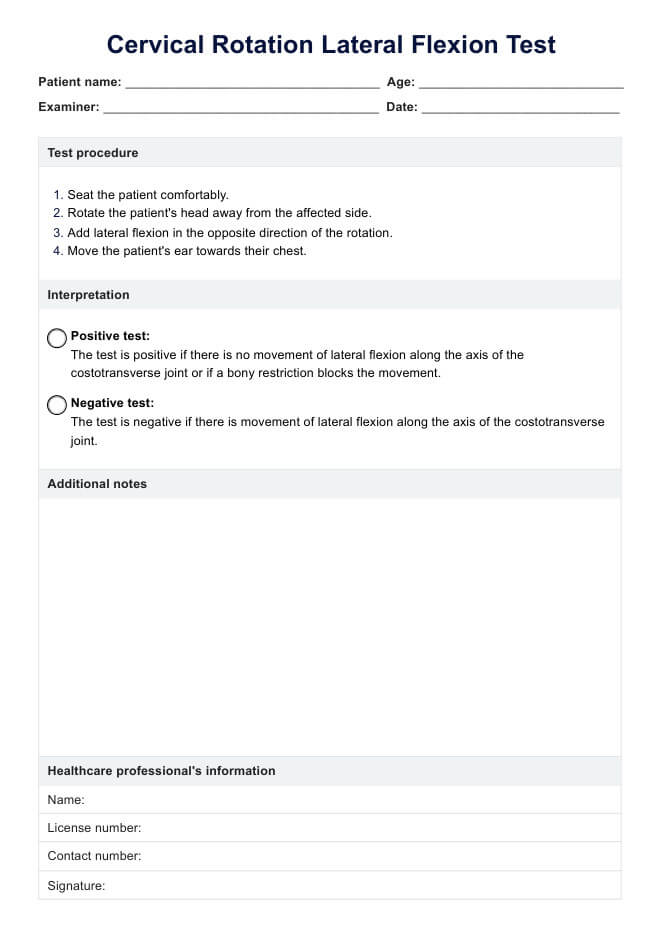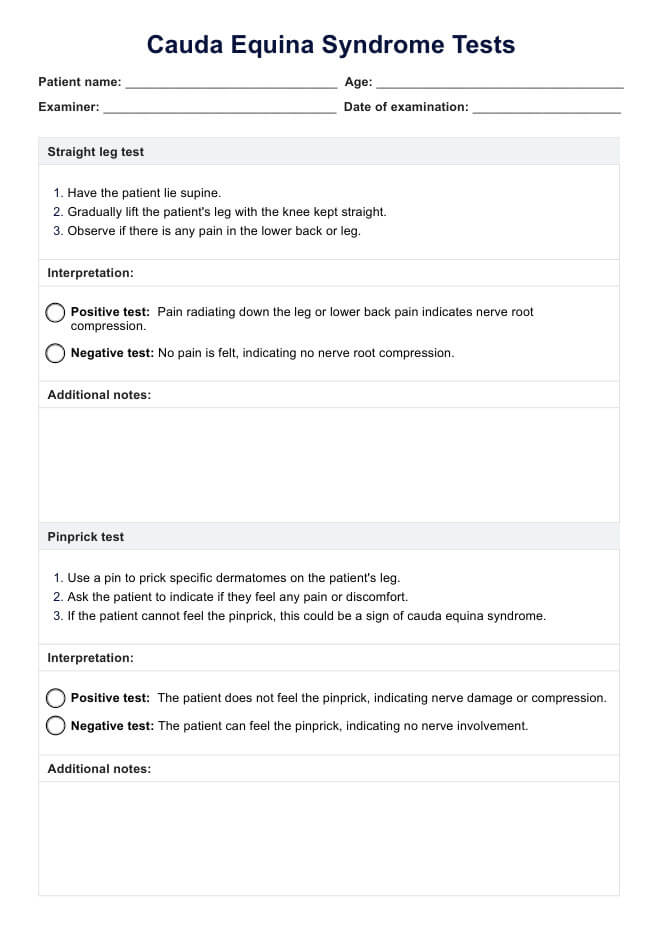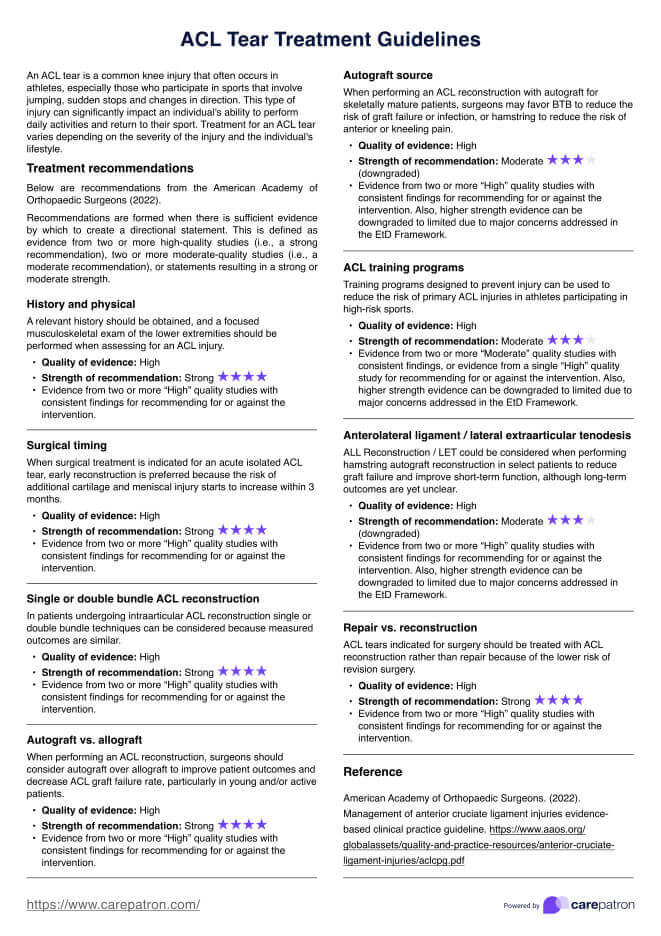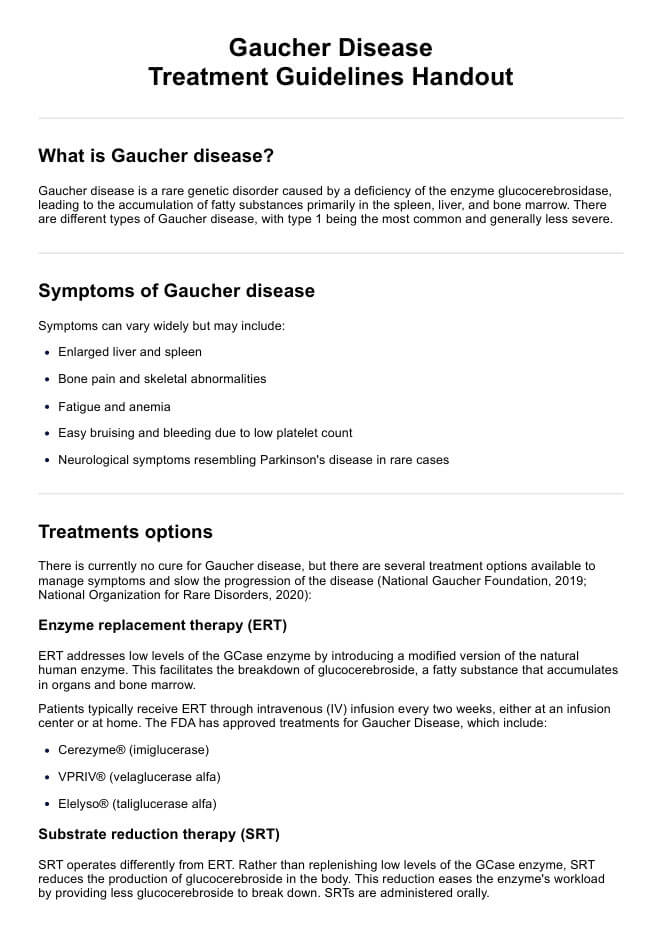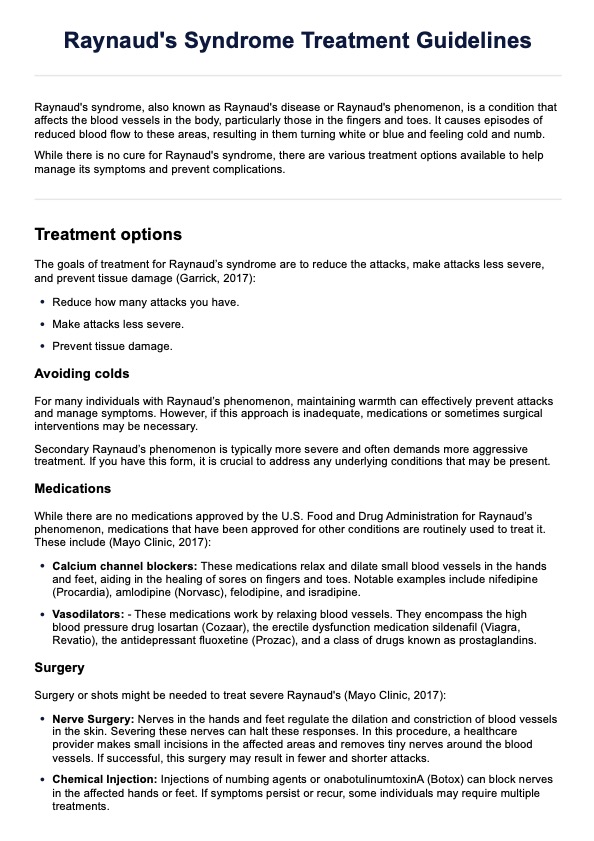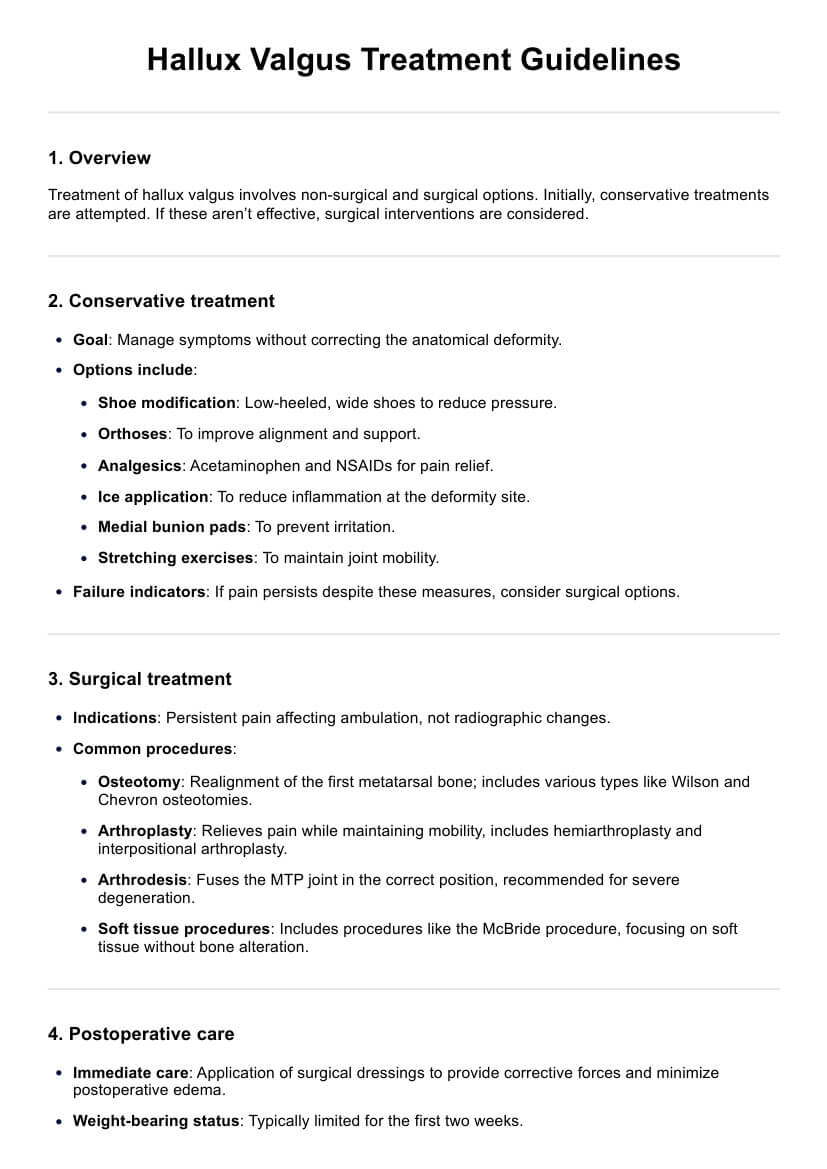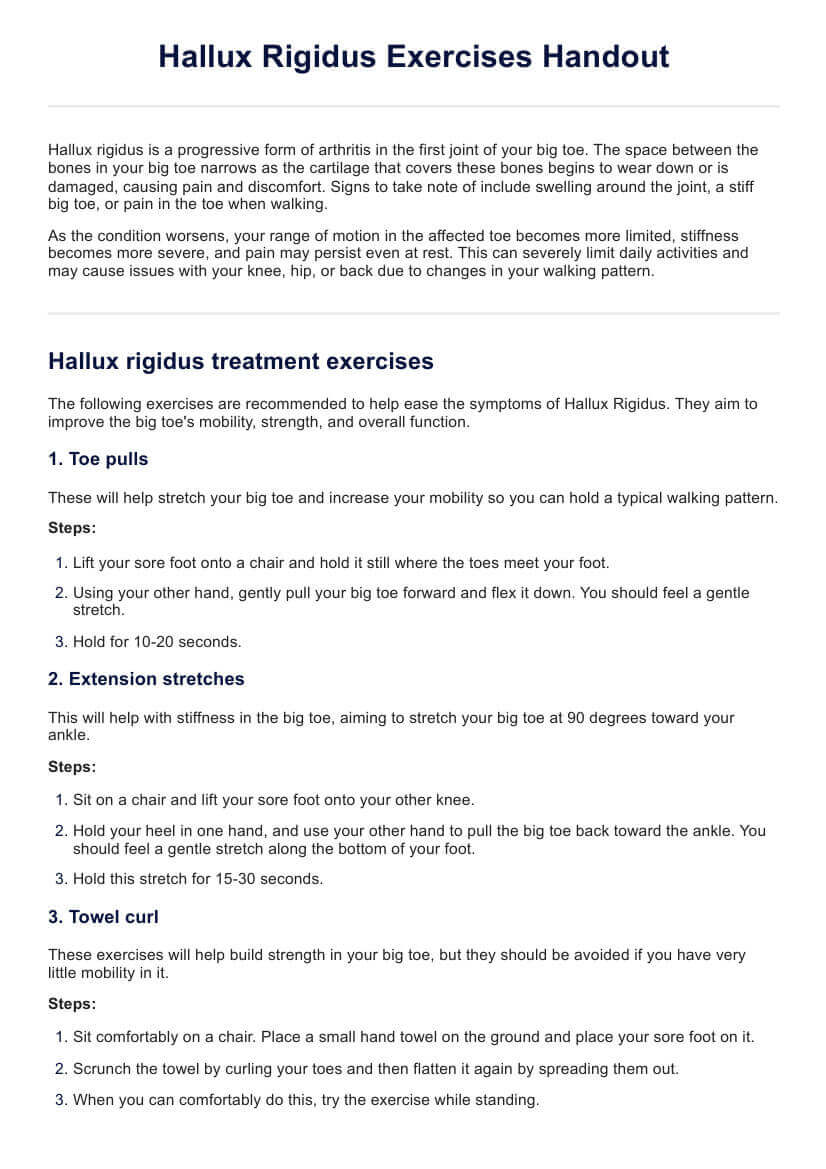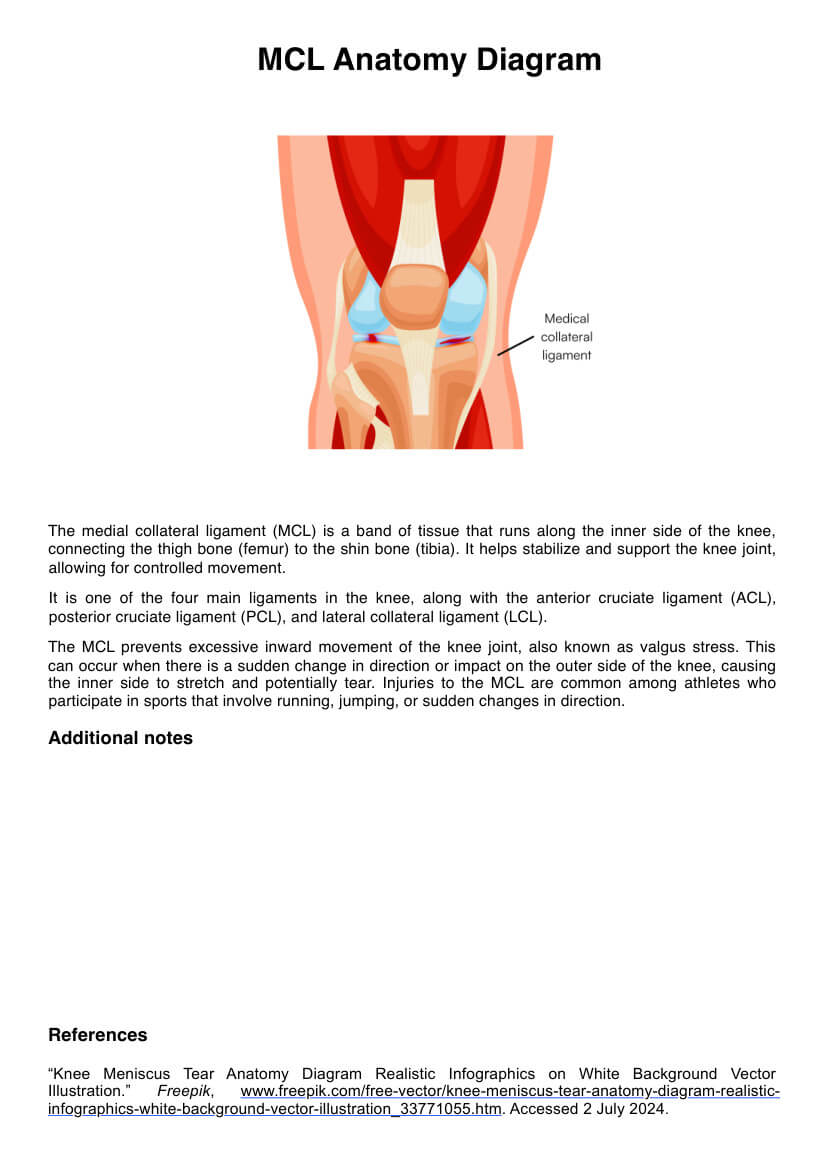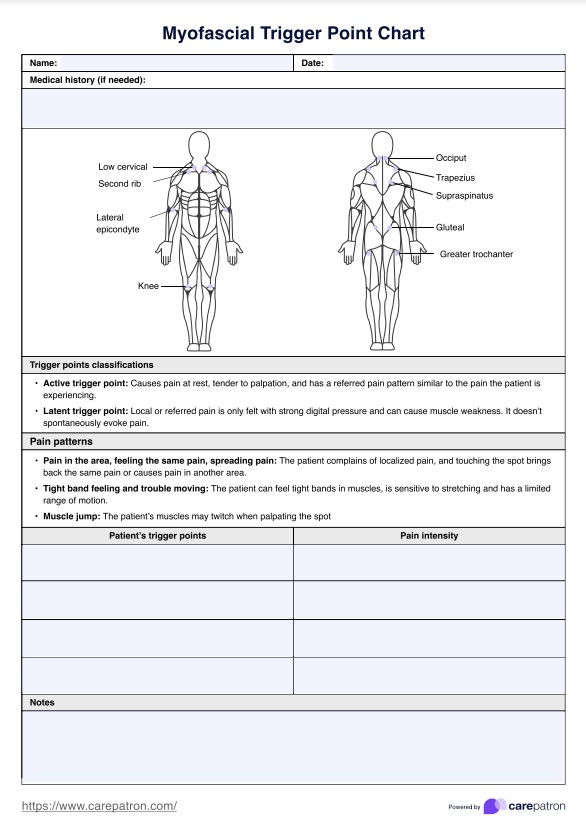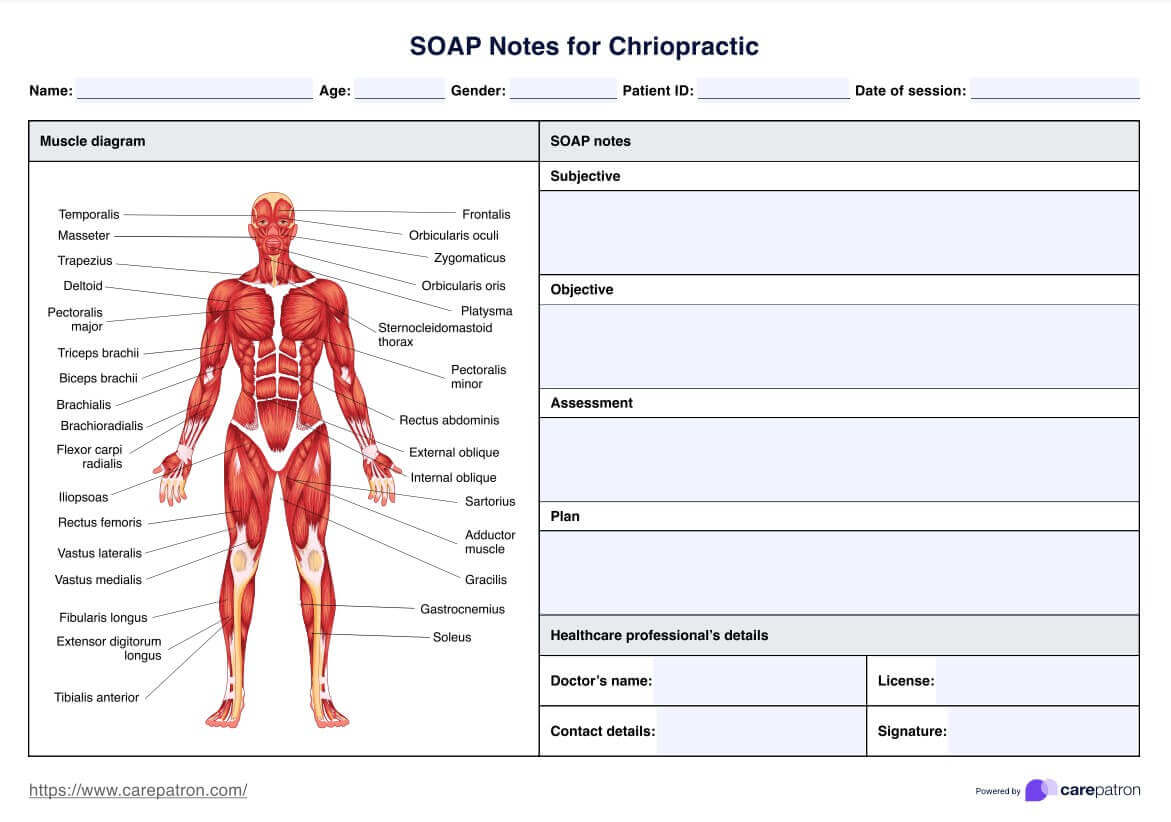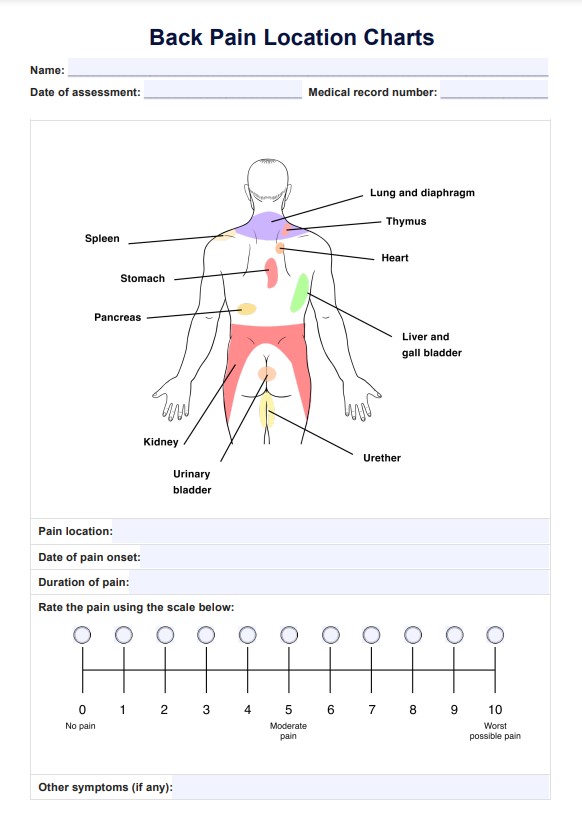Chiropractic Treatment Plan Template
Download Carepatron's free Chiropractic Treatment Plan PDF template to streamline patient care, support recovery, and customize treatment effectively.


What to know about chiropractic practices
Chiropractic practices are focused on diagnosing and managing neuromuscular conditions through noninvasive methods, with a primary emphasis on spinal manipulation (Gevers-Montoro et al., 2021). These practices are rooted in the goals of restoring normal joint function, promoting pain relief, and improving musculoskeletal health. A chiropractor develops a treatment plan after conducting patient interviews, physical exams, and diagnostic assessments.
Common chiropractic treatments include spinal adjustments, soft tissue therapy, and therapeutic exercises (LeFebvre et al., 2012) aimed at correcting muscle balance and improving functional independence. Techniques vary in intensity and may involve rapid joint movements or gentler mobilization to address back pain, joint stiffness, or restricted mobility. Chiropractic techniques are designed to normalize joint motion, reduce nerve interference, and support recovery without medication or surgery.
Patient education is also a core component, with practitioners offering guidance on posture, activity, and lifestyle to support long-term outcomes. Chiropractic care is frequently used for conditions like back pain, neck pain, and headaches, emphasizing evidence-based, hands-on treatment.
Chiropractic Treatment Plan Template
Chiropractic Treatment Plan Template Example
What is a Chiropractic Treatment Plan?
A Chiropractic Treatment Plan is a structured and individualized care strategy designed to manage musculoskeletal conditions by addressing the specific findings from a comprehensive clinical assessment. It begins with evaluating the patient’s medical history, current symptoms, and physical function. This includes range-of-motion testing, postural assessment, and diagnostic tools to determine the severity of the patient’s condition. A patient’s individual treatment plan is then developed to align with defined treatment goals, such as reducing arm pain, improving function, or restoring joint mobility.
Chiropractic Treatment Plans typically include a combination of spinal adjustments, therapeutic exercises, and adjunctive methods like heat therapy (National Spine Health Foundation, 2024). These plans are implemented over a few weeks, with regular chiropractic visits tailored to support the healing process and reduce pain. The frequency of visits may vary depending on the patient’s response to care and clinical progress following the first chiropractic adjustment.
Each treatment plan is responsive and may be modified based on the patient’s condition, ensuring continued progress toward functional recovery. Chiropractors may also collaborate with the patient’s primary care provider when necessary to ensure integrated care. Additionally, patient education is a key element, supporting long-term outcomes through guidance on posture, ergonomics, and self-care strategies.
In clinical practice, treatment plans serve as a foundational tool for efficiently managing nervous systems and musculoskeletal conditions. They provide a clear roadmap for practitioners seeking chiropractic care options to deliver measurable outcomes through evidence-informed methods.
How does it work?
Carepatron’s Chiropractic Treatment Plan template is designed to streamline care planning and documentation. Medical professionals can easily integrate it into their workflow to improve patient outcomes, track clinical progress, and ensure consistent care delivery. The steps below show how to use the template effectively from start to finish.
Step 1: Access the treatment plan template
Click the “Use template” button to get started. You’ll be redirected to the Carepatron app, where you can immediately use the Chiropractic Treatment Plan. This gives you quick access to a customized, clinician-ready tool tailored for chiropractic documentation.
Step 2: Use the plan in patient assessment
During patient assessment, fill in the relevant sections such as medical history, presenting complaints, assessment methods, and diagnosis. The structured layout supports consistent data capture, helping ensure that all clinical findings are documented clearly and systematically for informed decision-making.
Step 3: Discuss goals and plans with patient
Use the treatment goals section to collaborate with the patient and outline short-term and long-term objectives. This reinforces patient engagement while ensuring alignment between clinical findings and chiropractic care strategies. Establish clear expectations for visit frequency, techniques, and targeted outcomes.
Step 4: Provide patient support and next steps
Utilize the lifestyle guidance, education, and follow-up planning sections to support ongoing care. This includes assigning exercises, providing resources, scheduling re-evaluations, and documenting notes. These components help guide the patient through their care journey and support long-term musculoskeletal health.
Benefits of using this treatment plan
Using this Chiropractic Treatment Plan offers multiple workflow advantages for medical professionals. It provides a structured format to capture specific details related to patient assessments, diagnoses, and interventions. Most chiropractors benefit from having a clear framework to document spinal mobilization techniques, lifestyle recommendations, and follow-up strategies. The template supports clinical decision-making by organizing relevant information in one place, allowing practitioners to track progress in reducing pain and restoring functional independence. It also aids in identifying appropriate treatment options for chronic conditions that affect the nervous system and interfere with daily living.
The plan accommodates different techniques and patient presentations, allowing clinicians to establish specific goals and tailor care accordingly. It also facilitates the planning of a maintenance program for most patients, enabling them to return to normal activities safely. Compared to other forms of documentation, this template improves consistency and efficiency in care delivery, contributing to better outcomes and long-term support for overall health.
References
Gevers-Montoro, C., Provencher, B., Descarreaux, M., Ortega de Mues, A., & Piché, M. (2021). Clinical effectiveness and efficacy of chiropractic spinal manipulation for spine pain. Frontiers in Pain Research, 2, Article 765921. https://doi.org/10.3389/fpain.2021.765921
LeFebvre, R., Peterson, D., & Haas, M. (2012). Evidence-based practice and chiropractic care. Journal of Evidence-Based Complementary & Alternative Medicine, 18(1), 75–79. https://doi.org/10.1177/2156587212458435
National Spine Health Foundation. (2024, August 20). Chiropractic care. National Spine Health Foundation. https://spinehealth.org/article/chiropractic-care/
Commonly asked questions
A Chiropractic Treatment Plan is a structured clinical document outlining the patient’s medical history, assessment findings, treatment goals, chiropractic techniques, and follow-up strategies. It is customized for each patient to support functional recovery, reduce pain, and track progress over time.
The seven standard chiropractic adjustments include Diversified, Gonstead, Activator Method, Thompson Drop, Flexion-Distraction, Spinal Mobilization, and Sacro-Occipital Technique. Each method uses different techniques to improve joint function, relieve pressure on nerve roots, and support musculoskeletal alignment.
The five phases of chiropractic care are relief care, corrective care, strengthening care, wellness care, and maintenance care. These phases guide the progression from initial symptom relief to long-term support for spinal health and overall function.
Chiropractic adjustments may release stored metabolic waste products like lactic acid and carbon dioxide from soft tissues. This natural response can cause some patients mild, short-term symptoms such as fatigue or headache.


